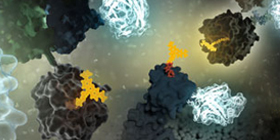Kinase target engagement is a new way to study kinase inhibitors for target selectivity, potency and residency. The NanoBRET™ TE Intracellular Kinase Assays enable you to quantitate kinase-inhibitor binding in live cells, making these assays an exciting new tool for kinase drug discovery research.
For today’s blog about NanoBRET™ TE Intracellular Kinase Assay, we feature spokesperson Dr. Matt Robers. Matt is part of Promega’s R & D department and is one of the developers of the NanoBRET™ TE Intracellular Kinase Assay.
Continue reading “Quantitating Kinase-Inhibitor Interactions in Live Cells”


